Keeping your hair healthy can either be easy or tough, depending on how much care you are willing to put into it. One way to keep your hair healthy is to get a protective hairstyle, like braids. But there are steps that you need to follow before getting your braids done.
If you are looking forward to getting your braids done and are wondering should I oil or grease my scalp before braids, we have the answers for you.
Oiling or greasing your scalp moisturizes both the scalp and hair. It also allows them to lock that moisture in so that it stays for a while. Since you can’t moisturize your hair as much after getting your braids done, it is suggested that you moisturize it before.
Moving on further down, we’ll tell you all you need to know about how to care for your hair before and after getting braids. So let’s dive right into it!
Preparing Your Scalp for Braids: Options for What to Put on Before Braiding

Preparing your hair and scalp before getting braids done can go a long way in allowing you to keep your braids on for longer. The steps below are proven to help with getting braids. Please read through them with care:
1. Washing Hair Before Braiding
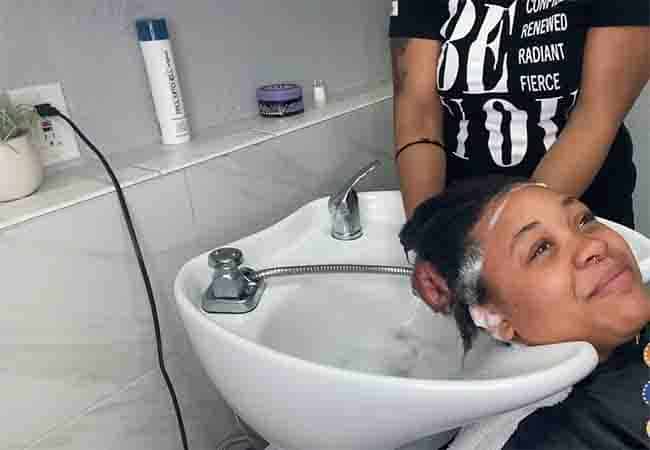
The importance of washing your hair before getting braids is impeccable. Washing hair with a clarifying shampoo helps remove all the dirt and debris that accumulates on your scalp.
Shampooing your hair before getting braids allows you to keep your braids for longer, as it mitigates the need for washing your hair right after getting them done.
2. Moisturizing your Hair: Tips and Techniques
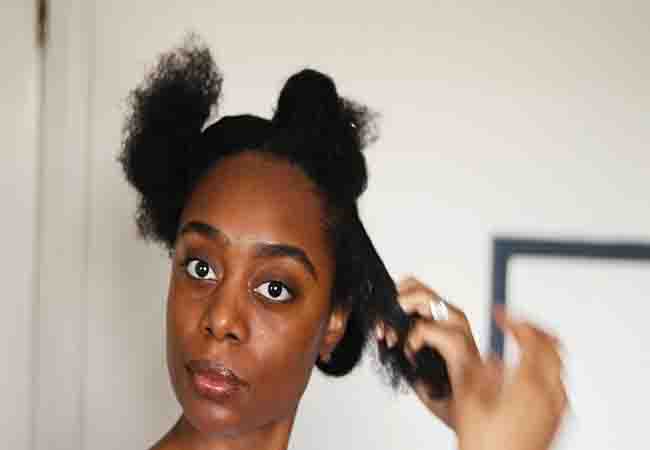
Moisturizing plays an essential role in keeping your hair healthy and smooth with braids. Before you get your braids done, do the following to ensure your hair has enough moisture locked in:
Oil your hair and scalp. Oiling allows your hair to absorb and lock in moisture, keeping it healthy and limiting the chances of breakage.
Aloe vera and argan oil are miracle ingredients when it comes to moisturizing hair. Apply a gentle amount and let it sit for a while before washing it off.
Wash your hair with a shampoo that is made from natural ingredients like tea tree oil, peppermint oil
Use cold water to wash your hair as warm water can remove the natural oils in your hair.
Condition your hair properly and apply a leave-in conditioner to keep hair moisturized for longer.
3. Preparing a Dry Scalp for Braids
I. What is Good for a Dry Scalp with Braids

A Dry scalp can be a nightmare. It can become flaky, dirty, and full of dandruff if not taken care of properly. To prevent your scalp from drying out, you can do the following:
- Wash and clean your hair and scalp thoroughly.
- Apply a leave-in conditioner and massage it so that it covers all your hair.
- Mix some castor oil, peppermint oil, and coconut oil, and put the mixture in a spray bottle. Spray the mixture on your scalp to moisturize it.
II. Does Coconut Oil Help with Braids?
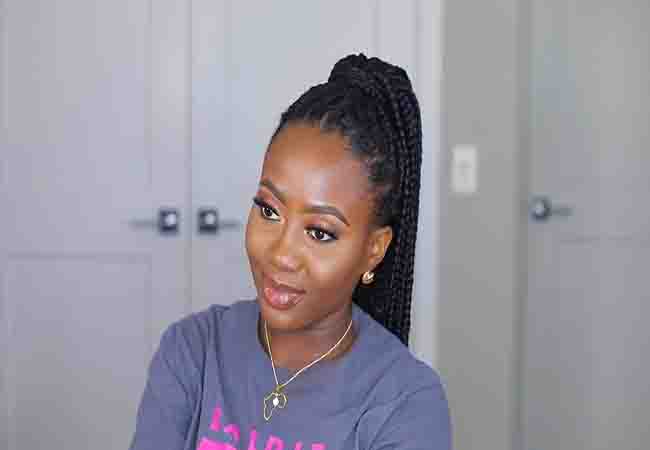
Of all the oils you can apply to your scalp with braids on, coconut oil is your best friend. Its moisture-retaining capabilities are very high, meaning it will stay in and keep your hair and scalp hydrated for longer.
Coconut oil also has anti-microbial and anti-oxidant properties, which help keep your hair and scalp healthy.
4. What Not to do When Getting Braids
I. Braiding Clean or Dirty Hair: Factors to Consider
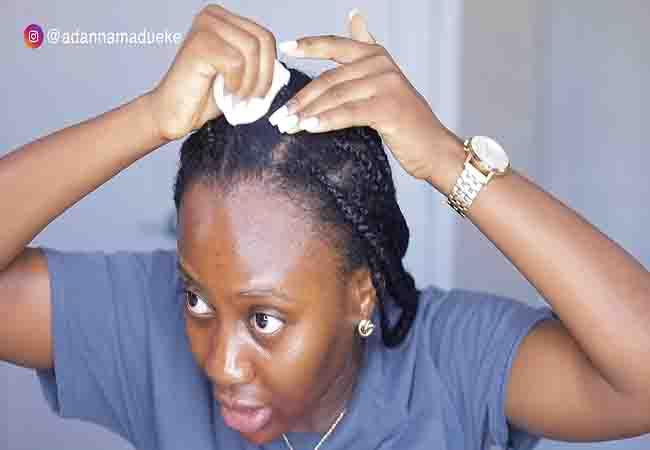
The main way to keep your hair and scalp healthy is by keeping them clean. Once you get your braids done, it becomes tougher to clean them than it is without braids.
To ensure they are healthy, clean them thoroughly with shampoo, and moisturize them with a conditioner before getting your braids done.
If you don’t do so and get braids done on dirty hair instead, you’ll face issues of the scalp, such as itchiness, flakes, burning, and dandruff. And of the hair, such as breakage, hair fall, and even baldness.
II. Braiding Wet or Dry Hair

Dry out or at least dampen your hair before getting braids installed. Getting braids on wet hair can make them too heavy, according to hairstylist Kayley Pak of John Barret Salon.
III. Why You Should Not Get Your Braids Wet
Braids are tougher to dry out than other hairstyles. The longer your braids are wet, the more chances there are of fungal growth on your scalp.
Wet braids mean a wet scalp which can lead to mold and mildew formation.
IV. Do You Have to Put Hot Water on Braids?
While hot water should not always be poured on your hair and scalp, they work surprisingly well when it comes to maintaining your braids.
Hot water eliminates frizz and keeps your hair straight in braids, so washing your hair with hot water while you have your braids on will help you maintain them better.
5. Can You Use Grease to Braid Hair?
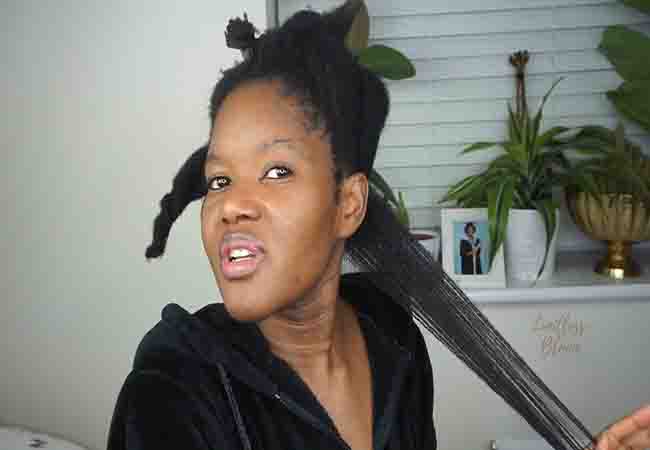
Grease, like oil, helps keep your hair moisturized in braids. But how should you use it? And how much does it actually help? Here are the answers:
a. The Pros and cons of Greasing the Scalp with Braids
Like everything else, greasing has its pros and cons. Let’s talk about the pros first:
- Greasing helps lock moisture in your hair and scalp.
- It makes it easier to maneuver your hair when getting braids installed.
- Grease made from natural products can give your hair some of the nutrients it needs to be healthy.
But what about the cons? Here they are:
- Too much grease can weigh down your braids.
- Grease can attract dirt and debris, which can be tough to remove.
- Excessive grease can make your hair look greasy, which is unwanted.
b. Alternatives to Greasing the Scalp with Braids
If you don’t want to grease your hair and are looking for healthy alternatives, the first thing we’d like to suggest is coconut oil.
Coconut oil is full of healthy fatty acids that are absorbed by your hair. These acids help keep hair healthy while allowing it also to retain moisture and look smooth.
Another alternative is a light oil, like argan oil. It helps prevent breakage and split ends while also keeping your hair moisturized.
6. What Oil to Use on Scalp with Braids
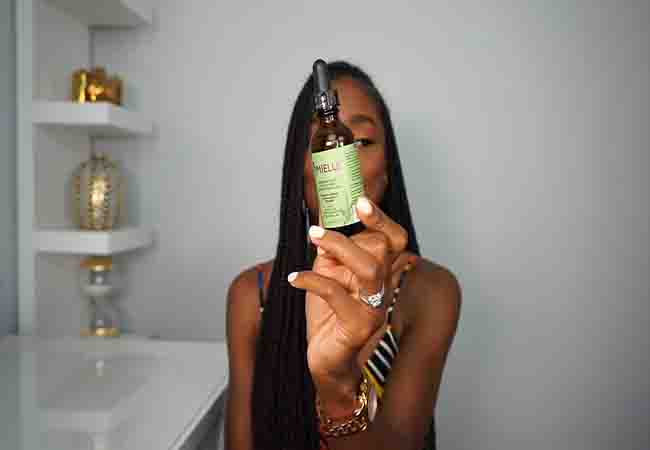
Given the vast amount of hair oils available, both natural and synthetic, it can take time to choose which one to use.What oil you can and should use depends on your hair type and what you’re expecting the oil to do. Once you have that figured out, the next step is applying the oil.
a. Applying Oil to Natural Hair Before Braiding: Tips and Techniques
It might seem easy, but to properly apply oil to your hair, you need to follow certain steps. These are:
- Put the oil in a spray or an applicator bottle for easy application.
- If you’re applying the oil as part of your hair treatment procedure, apply your choice of oil and leave it overnight before shampooing.
- Use a mixture of tea tree oil, jojoba oil, castor oil, and coconut oil to both moisturize and keep your hair and scalp healthy.
- Make sure you’re not applying more oil than needed, as the extra oil will attract dirt and make your hair look greasy.
b. How Often Should You Oil Your Scalp?
You should oil your hair at least twice a week. Doing it the night before you wash and shampoo your hair will not only make your hair look smoother and shinier, but it will also moisturize it.
c. How Long Should I Let Oil Sit on My Scalp?
Ideally, you can keep the oil sit on your scalp overnight. But don’t overdo it. Remember that even one-two hour can be enough.
If you let it sit for any longer than that, your hair will start collecting lint, dirt, and debris. Ruining the purpose of oiling your hair in the first place.
d. How Do You Keep Your Scalp from Drying Out with Braids?
Without proper moisturizing, your scalp will keep getting drier and drier, making it flaky and developing dandruff. To keep that from happening, moisturize your hair whenever you feel your scalp is getting dry.
Use leave-in conditions made from natural products or natural oils such as tea tree oil, sweet almond oil, jojoba oil, and coconut oil to keep your hair and scalp moisturized.
e. Does Oil loosen Braids?
Yes, oiling your hair helps loosen tight braids. Mix some water and your choice of oil in a spray bottle and spray it to soothe your scalp and loosen your braids.
FAQ
It is generally recommended to apply a light oil or a hair and scalp conditioner to your hair before getting knotless braids. This can help to moisturize and protect your hair from the tension caused by the braiding process.
Before getting braids, it’s important to prepare your hair by washing and deep conditioning it. You can also apply a light oil or hair and scalp conditioner to moisturize and protect your hair.
To prepare your hair for knotless braids, start by washing and deep conditioning your hair. You can also apply a light oil or hair and scalp conditioner to moisturize and protect your hair before braiding.
It is generally recommended to apply oil or a hair and scalp conditioner before applying mousse when preparing your hair for braiding. The oil can help moisturize and protect your hair, while the mousse can help with hold and styling.
It is generally recommended to oil your scalp with braids every few days or as needed to help moisturize and soothe your scalp. Avoid using heavy oils that can cause buildup and make your braids look greasy.
It’s best to use lightweight oils such as jojoba oil, argan oil, or almond oil in braids. These oils can help moisturize and protect your hair without weighing it down.
To prepare your hair for knotless braids, start by washing and deep conditioning your hair. You can also apply a light oil or hair and scalp conditioner to moisturize and protect your hair before braiding. It’s important to detangle your hair and make sure it’s dry before the braiding process begins.
It depends on the type of braids you are getting. For knotless braids, it’s generally recommended to braid dry hair. Wetting your hair can cause it to shrink, which may result in uneven tension during the braiding process. However, for some other types of braids, wetting the hair may be necessary for a specific style or technique.
Yes, you can use a leave-in conditioner before braiding your hair. Leave-in conditioners can help to moisturize and detangle your hair, making it easier to braid. Just make sure to use a lightweight leave-in conditioner and avoid using too much product to prevent buildup.
Before braiding, it’s important to make sure your hair and scalp are clean and moisturized. You can wash your hair with a gentle shampoo and deep condition it to keep it moisturized. You can also apply a light oil or hair and scalp conditioner to protect your hair from the tension caused by braiding.
Yes, you can apply a lightweight oil or a hair and scalp conditioner to your scalp before getting braids. Oiling your scalp can help to moisturize and soothe your scalp, and also provide a protective barrier between your scalp and the tension caused by braiding.
Yes, you can use coconut oil
To oil your hair in a protective style, use a dropper or applicator bottle to apply the oil directly to your scalp. Avoid applying too much oil, as this can lead to build-up and make your style look greasy. Use lightweight oils such as jojoba, almond, or grapeseed oil that won’t weigh down your hair.
Yes, it’s important to moisturize your hair in a protective style to prevent dryness and breakage. Use a lightweight leave-in conditioner or spray, and avoid heavy creams that can build up and cause your style to unravel.
To make your protective styles last longer, make sure your hair is clean and well-moisturized before installing the style. Use a satin or silk scarf or bonnet to protect your style at night, and avoid excessive manipulation.
Hair oil can help with protective styling by providing moisture to your scalp and hair. However, be mindful of the type and amount of oil you use to avoid weighing down your hair or causing build-up.
It’s not necessary to wash your hair in between protective styles, but it’s important to keep your scalp clean and free of build-up. Use a scalp cleansing spray or witch hazel on a cotton pad to gently clean your scalp without disrupting your style.
You can use lightweight oils, leave-in conditioners, or natural butters like shea or mango to protect and moisturize your hair in a protective style.
Applying oil to your scalp should not loosen braids, as long as you’re not applying too much oil or using heavy oils that can weigh down your hair.
Yes, you can apply oil to box braids, but use a lightweight oil to avoid build-up and to prevent your style from looking greasy.
The benefits of oiling braids include providing moisture to your scalp and hair, reducing dryness and breakage, and promoting hair growth.
To protect fresh braids, avoid excessive manipulation, keep your scalp clean and moisturized, and use a satin or silk scarf or bonnet to protect your style at night.
Oil can help to soothe an itchy scalp, but it won’t completely stop the itching. Use a scalp treatment with tea tree oil or witch hazel to relieve itching and irritation.
To moisturize your braids, use a lightweight leave-in conditioner or spray, and avoid heavy creams or oils that can cause build-up.
Yes, you can put oil in your cornrows to moisturize your scalp and hair. Use a lightweight oil and apply it directly to your scalp using a dropper or applicator bottle.
Yes, it’s important to moisturize your braids to prevent dryness and breakage. Use a lightweight leave-in conditioner or spray, and avoid heavy creams or oils that can cause build-up.
To help your hair hold a protective style, make sure your hair is clean and well-moisturized before installing the style. Use a holding gel or edge control to smooth down flyaways, and avoid excessive manipulation.
To seal the ends of natural braids, you can use a hot water dip method or a synthetic hair sealant. Dip the ends of your braids in hot water to seal them, or use a synthetic hair sealant to prevent fraying.
How often you oil your hair in a protective style depends on your hair type and the type of oil you’re using. Generally, it’s recommended to oil your scalp and hair every few days to prevent dryness and breakage.
Yes, using oil can help to moisturize and protect your hair in a protective style. It helps to prevent dryness and breakage, promotes hair growth, and soothes the scalp.
Conclusion
Oiling your scalp helps keep it healthy and moisturized and makes it easy to maintain. Oiling it before getting braids goes a long way toward having healthy, luscious hair.
When it comes to the question, should I oil or grease scalp before braids? The short answer is that you should.
Not only will that make it easier for you to install your braids, but it will also keep your hair moisturized for longer.

